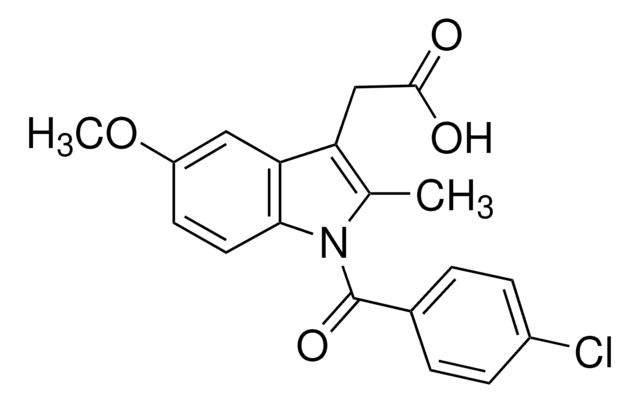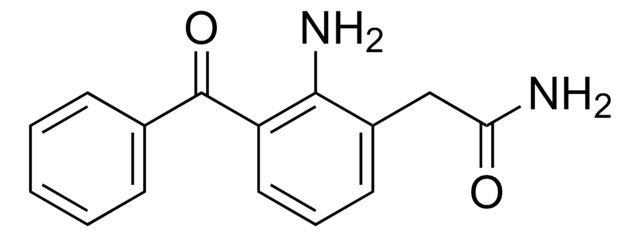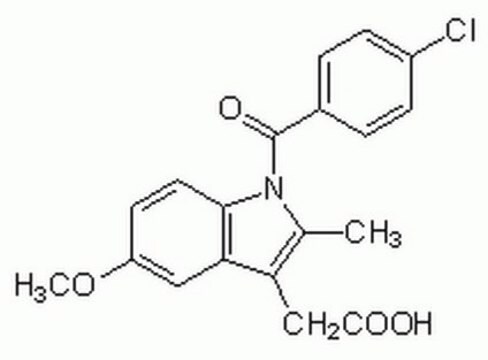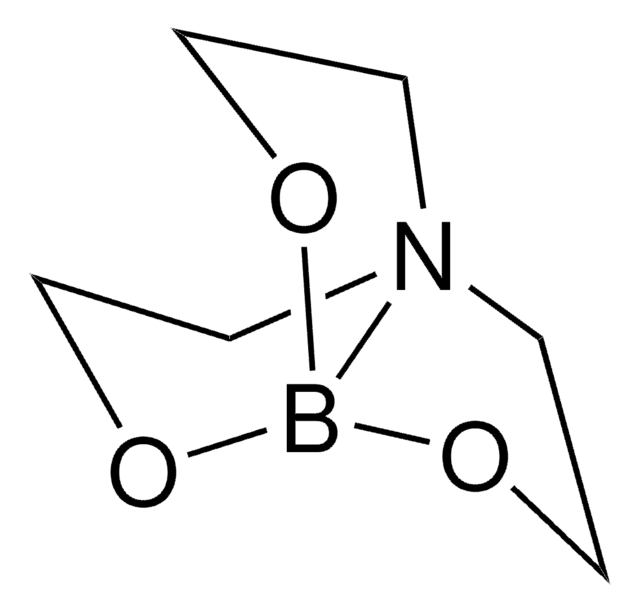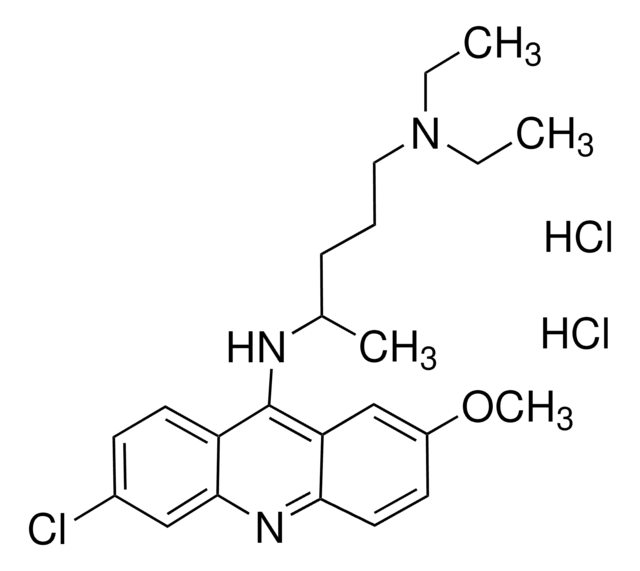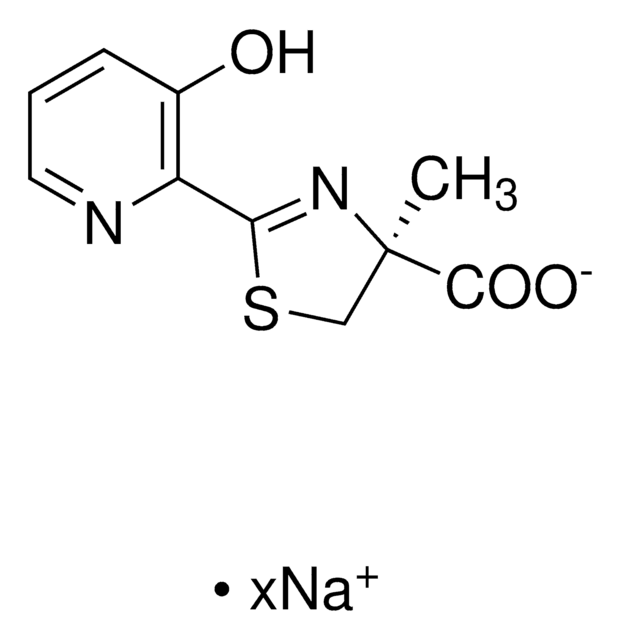Wichtige Dokumente
SML0289
Bromfenac sodium
≥98% (HPLC)
Synonym(e):
2-Amino-3-(4-bromobenzoyl)benzeneacetic acid sodium salt
About This Item
Empfohlene Produkte
Assay
≥98% (HPLC)
Form
powder
Lagerbedingungen
desiccated
Farbe
faintly yellow to dark yellow
Löslichkeit
H2O: ≥5 mg/mL
Lagertemp.
2-8°C
SMILES String
[Na+].Nc1c(CC([O-])=O)cccc1C(=O)c2ccc(Br)cc2
InChI
1S/C15H12BrNO3.Na/c16-11-6-4-9(5-7-11)15(20)12-3-1-2-10(14(12)17)8-13(18)19;/h1-7H,8,17H2,(H,18,19);/q;+1/p-1
InChIKey
HZFGMQJYAFHESD-UHFFFAOYSA-M
Angaben zum Gen
human ... PTGS1(5742) , PTGS2(5743)
Anwendung
- to study its ability to bind to melanin
- in the synthesis of bromfenac indolinone standard
- to analyze its permeability in porcine conjunctiva
Biochem./physiol. Wirkung
Signalwort
Danger
H-Sätze
Gefahreneinstufungen
Acute Tox. 3 Oral
Lagerklassenschlüssel
6.1C - Combustible acute toxic Cat.3 / toxic compounds or compounds which causing chronic effects
WGK
WGK 3
Flammpunkt (°F)
Not applicable
Flammpunkt (°C)
Not applicable
Hier finden Sie alle aktuellen Versionen:
Analysenzertifikate (COA)
Die passende Version wird nicht angezeigt?
Wenn Sie eine bestimmte Version benötigen, können Sie anhand der Lot- oder Chargennummer nach einem spezifischen Zertifikat suchen.
Besitzen Sie dieses Produkt bereits?
In der Dokumentenbibliothek finden Sie die Dokumentation zu den Produkten, die Sie kürzlich erworben haben.
Kunden haben sich ebenfalls angesehen
Unser Team von Wissenschaftlern verfügt über Erfahrung in allen Forschungsbereichen einschließlich Life Science, Materialwissenschaften, chemischer Synthese, Chromatographie, Analytik und vielen mehr..
Setzen Sie sich mit dem technischen Dienst in Verbindung.